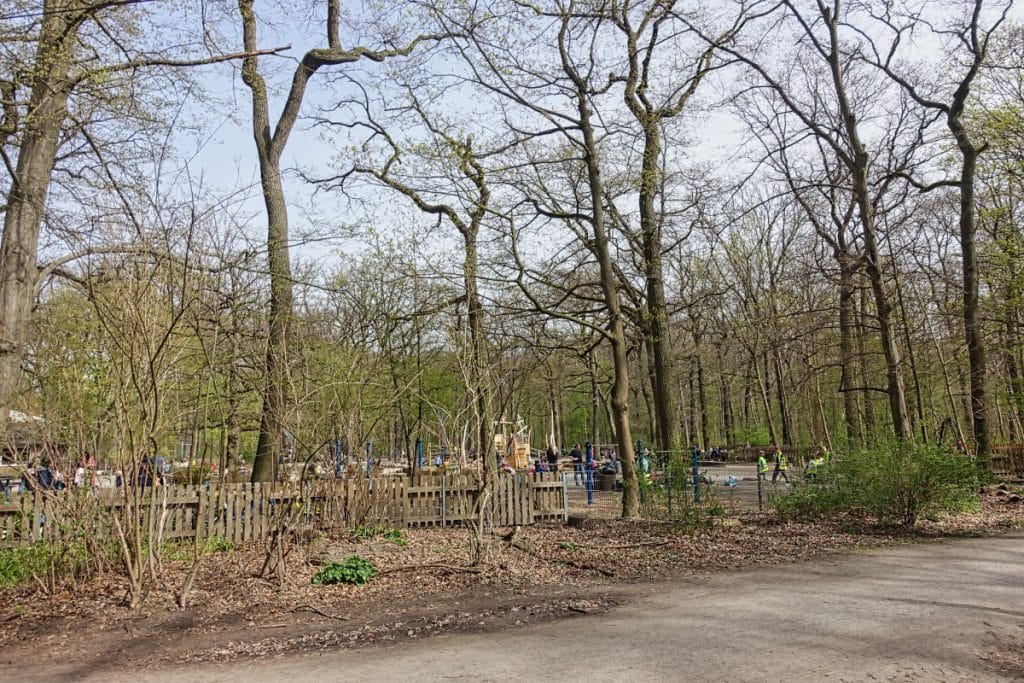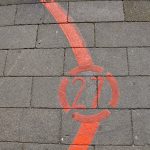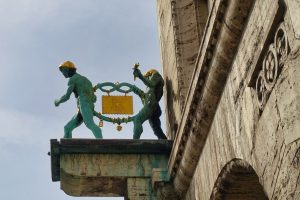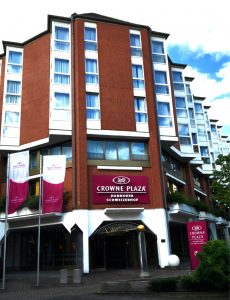Cycling in Hannover is a wonderful way to explore the city. We got on the hotel’s rental bikes and explored Green Hannover.

The bike paths in the city are for the most part very well developed and also well signposted. In some places, however, you have to be careful, because it is sometimes allowed to use the bike path in both directions.
From Aegientorplatz, where our hotel was located, our bike tour took us to the city park with a short stop at the Garden Church.

Hannover City Park
Hannover City Park is located in the Zoo district south of the Congress Center.

In June 1914, the “Stadthallengarten” was inaugurated here, a park that resembled a spa. The new garden had a long water basin and invited the population to take short walks.
After the site was used for the “Annual Show of German Garden Culture” in 1933, the air raids of World War II destroyed the site. After the war, Hannoverians used it as garden land and grew food.

In the summer of 1951, the first Federal Garden Show took place in Hannover. The site was included in the exhibition area in.
Today, the facility has been largely adapted to the design of that time, but it no longer exists in the dimensions of that time. Part of the complex is also listed as a historical monument.

During a short walk through the city park you can enjoy the green Hannover. During our visit, the first spring flowers were visible and the leaves began to sprout on the trees. The whole park is very well maintained, the beds “neatly” laid out. You will not find wild growing plants here.
Very nice are also the water pools, some of which are inhabited by fish and ducks. These create a pleasant climate and are certainly a great place to retreat in the hot summer months.
There is a small café in the city park. The Rose Café still has some of the charm of the 1950s and is a popular meeting place in the park.

Address:
Clausewitzstraße ,
30175 Hannover
Opening hours:
March to September: 9 -21 h
October – February: 8 – 19 h
Ellenriede
The bike tour through the green Hannover led us further into the city forest Ellenriede. The approximately 6.5 km² city forest is located in the eastern urban area of Hannover and is often referred to as the “green lung” of the city. It is one of the largest contiguous urban forests in Europe.

Who is on the way in the city forest, finds about 80 kilometers of laid out hiking trails, 38 kilometers of bike paths and 11 kilometers of designated bridle paths. Numerous ditches and watercourses run through the oak and hornbeam forest and in the many clearings you will find children’s playgrounds, sunbathing lawns, tobogganing hills … Those who have the peace and time can sit along quiet paths and observe the more than one hundred species of birds, bats, squirrels, hares, foxes, stone martens and mice. Many animals feel at home in the Ellenriede.
Cycling through the Ellenriede is very easy, the paths were quite wide and well signposted routes made it easy to find your way around.

Throughout the city forest area you can find numerous art objects, such as fountains, memorial stones and sculptures. A very beautiful sculpture is the Monument to the Queens, where we stopped briefly.
Königinnendenkmal (monument to the queens)
The monument to the queens stands on the edge of Ellenriede. Depicted are the two princesses and later queens Luise of Prussia and Frederike of Hannover. The women were the daughters of Charles II and became princesses of Prussia through their double marriage to Crown Prince Frederick William and Prince Frederick Ludwig (1793).

The statue was created by the sculptor Schadow for the Berlin Palace. The original is now in the Alte Nationalgalerie in Berlin. In Hannover stands a larger-than-life copy made by the sculptor Casal at the Emperor’s request. It is made of marble and is about a third larger than the original.
Hiroshima Grove
The next green stop on our bike tour was the Hiroshima Grove in Hannover. The grove with a memorial was created in 1987 on the grounds of the former horse racing track in the middle of the “Alte Bult” park.
Large areas of the park are now among the city’s specially protected biotopes and provide a protected habitat for many animals and plants.

The Hiroshima Grove was created in the course of the twinning of Hannover and Hiroshima. There are 110 cherry trees there in memory of the 110,000 Japanese killed in the atomic bombing. Only a few days too early we were there. The first cherry blossom buds were already visible, but unfortunately not yet blossomed. It must be a beautiful picture when the cherry trees are in full bloom.
Address:
Bischofsholer Damm 127,
30173 Hannover
Maschsee
With the bike around the Maschsee or rather a casual jogging round? We were out and about by bike at Hannover’s largest body of water. The man-made lake is about 2.4 kilometers long and about 530 meters wide at its widest point.

Until the late 19th century, the melting of snow in the Harz Mountains and the associated high water levels in the Leine and Ihme regularly led to flooding in Hannover. Attempts were made to regulate the danger of flooding by diking, but even this did not have any long-term success. In 1925, the mayor of the time commissioned the Maschsee project. The lake was to be laid out in the form of a bowl on the often flooded area of the Masch and fed by a pumping station.
Work began in the early 1930s. There was no money, but the NSDAP used the project “cleverly” to reduce the number of unemployed. The workers had to bring their own tools, received hardly any wages and the working conditions were very bad. In the end, about 1600 people worked on the excavation of the Maschsee. In 1936, the lake was completed.

The Maschsee has no natural inflow. The evaporated and seeped water (maximum 1.3 cm daily) is replenished by the operation of 3 pumps. From November to February, the pumps are not in operation. During this time, the water level drops about 45 cm.
The Maschsee is Hannover’s local recreation area. A fountain has been bubbling on the lake since 1986. You can sail a sailboat, pedal boat or e-boat and take a leisurely tour with a passenger ship. There is also a lido in the south of the lake.

Art lovers will discover numerous sculptures by various artists around the Maschsee. Particularly striking is the bronze sculpture of the Olympic torchbearer by Hermann Scheuerstuhl, standing on an 18.5 meter high stone column. Also by Georg Kolbe you can find a sculpture (the human couple) on the eastern shore.
From the cycle circuit of the Maschsee our bike tour led through the green Hannover further in the direction of Leibnitz University and in the Georgengarten.

Georgengarten
The Georgengarten was the last point on our bike tour through the city before we visited the Herrenhäuser Gardens.
The park was named after the English Guelph King George IV. It attracts numerous visitors, especially in summer, who enjoy their time out in the green on the large lawns. Numerous paths invite you to take a walk and you can also discover the park by bike.
The park is crossed by the almost two-kilometer-long Herrenhäuser Allee, which leads to the Großer Garten. The avenue is divided into three lanes. Carriages used to drive in the middle, one outer lane could be used by horsemen and the other by pedestrians. Today, the limiting lime trees still stand here, but carriages and horses are no longer seen.
The Georgenpalais in the middle of the Georgengarten was once the summer residence of the Hannoverian royal family. Today it houses the German Museum of Caricature and Drawing.

The bike tour was a program item of a Recherechereise to Hanover.














Leave a Reply